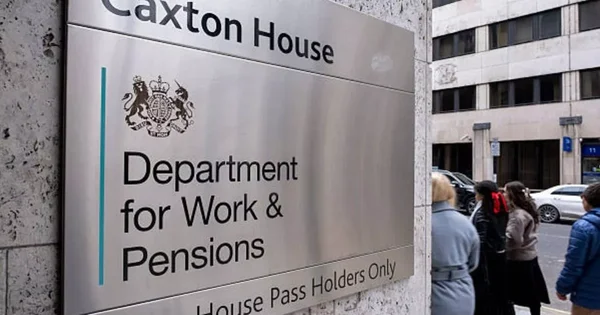Millions of UK workers have switched to home offices but many miss out on tax relief worth hundreds of pounds each year. Recently, there has been a significant shift in working patterns, with more of the workforce moving to remote and hybrid models. The government lets you claim back costs when your kitchen table becomes your desk and your spare room turns into your office.
You’re already paying these expenses anyway, so why not get some money back? Working from home doesn’t have to cost you extra when you understand the tax relief available. Many businesses, companies, and firms are adapting their policies to support employees working from home, recognizing the impact on productivity and employee well-being.
In this article, we’ll cover everything you need to know about claiming tax relief for your home office expenses. From understanding what qualifies to making your claim, we’ll guide you through each step. The future of working from home may continue to evolve as companies and employees learn from recent experiences and adapt to new ways of working.
What counts as working from home or hybrid working for tax purposes?
Your employer needs to require you to work from home regularly, not just when you fancy a change of scenery. This means having a formal arrangement rather than occasionally deciding to work from your sofa. A hybrid working policy can also establish eligibility for tax relief if it requires employees to split time between home and office.
You must use part of your home for work activities during business hours. Whether that’s a spare bedroom or corner of your lounge, the space needs to serve a genuine business purpose.
The arrangement should be permanent or long-term rather than just working from home on the odd rainy Tuesday. HMRC looks for consistent, ongoing home working patterns, including hybrid or flexible work patterns, when assessing claims.
You need to be an employee rather than self-employed or a contractor, as only employees can claim under these rules. Additionally, your home workspace must be necessary for your job, not just because you prefer working in your pyjamas.
Having a dedicated area that functions as your main workplace makes your claim much stronger. However, you don’t need an entire room - even a desk in the corner counts if it’s used regularly for work.

Which home working office expenses can you actually claim?
Heating and electricity costs for your workspace count, but only for the hours you’re actually working. You can’t claim for keeping your home warm all day if you only work mornings.
Business phone calls and broadband internet used for work purposes are fair game for claims, as these expenses are often necessary for communicating with clients and customers. Office equipment like desks, chairs, computers and printers can be claimed if bought specifically for work use.
Stationery and office supplies purchased just for work use qualify for relief too. Professional software subscriptions and work-related technology costs can be included in your claim as well.
Council tax and rent might be claimable too, but only the proportion that relates to your workspace. Furthermore, you can claim for repairs and maintenance costs that affect your work area.
Keeping a clear process for tracking and documenting your expenses will make claiming tax relief easier.
How much can you claim without keeping receipts?
HMRC offers a simplified flat rate of £6 per week, which works out to £312 each year. This covers heating, lighting and general household costs for your workspace without any paperwork hassle. This method also simplifies reporting requirements for employees claiming tax relief, as there is no need to provide detailed documentation of expenses.
You can claim this allowance if you work from home regularly throughout the tax year. The flat rate can’t be mixed with actual expense claims - you have to pick one method or the other.
Most people find this much easier than calculating and proving their actual costs. However, higher earners might benefit more from claiming actual expenses instead, though it requires more detailed record-keeping.
My colleague Sarah chose the flat rate method and found it saved her hours of paperwork. She simply ticked a box on her tax return and received her £312 relief without any further questions from HMRC.

What if your actual expenses are higher than the flat rate?
Work out what percentage of your home you use just for work activities. Apply this percentage to your household bills and mortgage interest to calculate your potential claim. When calculating claims, employees should also consider how they spend their time in their workspace to ensure accurate allocation of expenses.
Keep detailed records of all business-related purchases and expenses throughout the year. Additionally, separate your personal and work use of utilities and equipment to avoid any confusion with HMRC. An employee's ability to organise and maintain documentation is crucial for successful claims.
Getting professional advice might help you maximise your claims while staying on the right side of tax rules. There is a range of expenses that can be included in a claim if properly documented. However, think about whether the extra paperwork is worth the potential savings before choosing this route.
You’ll need to maintain careful records and be prepared to justify your calculations. Furthermore, this method requires more time and organisation than the simplified flat rate option.
How do you actually make the claim with HMRC?
Fill in the “Self Assessment tax return” section of your Self Assessment tax return if you already file one. Alternatively, use form P87 if you’re employed and don’t normally need to file a tax return.
Submit your claim online through the HMRC website or send it by post if you prefer paper forms. Include evidence of your working from home arrangement with your employer to support your claim. You may need to ask your manager for written confirmation of your working arrangement to provide as documentation.
Claims can be backdated up to four years from the end of the relevant tax year. However, HMRC might ask for more documentation to support your claim, so keep everything organised and easily accessible.
The online system is generally faster and provides immediate confirmation of receipt. Additionally, you can track the progress of your claim through your personal tax account. Using digital tools can lead to a more efficient and streamlined claim process.
For the latest information and guidance on working from home tax relief, search the HMRC website or other trusted resources.

Protecting your mental health as a remote worker
Remote working can sometimes feel isolating, but protecting your mental health is just as important as meeting deadlines. Make an effort to stay connected with colleagues and friends regular video calls, instant messages, or even joining online communities for remote workers can provide valuable support and a sense of belonging. Scheduling these interactions into your routine helps you feel part of a team, even when you’re not in the office.
Don’t underestimate the power of fresh air and movement. Take breaks throughout the day to stretch, go for a walk, or simply step outside for a few minutes. These small actions can boost your mood and productivity per hour, helping you stay focused and energised. Setting clear boundaries around your work hours and sticking to a consistent schedule will also help you avoid overworking and maintain a healthy work-life balance. Remember, looking after your physical health through regular exercise and a balanced diet can have a positive effect on your mental well-being, making it easier to handle the challenges of home working and stay motivated throughout the week.
What mistakes should you avoid when claiming?
Don’t claim for expenses your employer already covers or provides equipment for. Never claim the full cost of utilities - only the business proportion of your bills counts. Some employers may link pay or bonuses to office full time attendance, which can affect your eligibility for tax relief.
Keep your workspace claims realistic and in proportion to the size of your home. Don’t mix personal and business use when working out equipment costs for your claim either. It’s important to remind yourself to set boundaries between personal and business expenses to avoid mistakes.
Make sure your employer confirms your working from home arrangement in writing first. Furthermore, remember that claiming might affect Capital Gains Tax if you decide to sell your home later. Only those who are not required to be in the office full time can claim working from home tax relief.
Many people accidentally double-claim expenses or include personal costs in their calculations. Importantly, being honest and conservative with your claims protects you from potential penalties or investigations.
If you are struggling with the complexity of making a claim, seek support or professional advice to ensure you get it right.

Getting your tax affairs sorted
Working from home tax relief puts real money back in your pocket for expenses you’re already paying. The £6 weekly allowance offers a simple starting point, while actual expense claims might deliver bigger savings. The benefits of claiming working from home tax relief include financial savings and improved wellbeing for both employees and employers.
Don’t let another tax year slip by without claiming what you’re rightfully owed. Start by chatting with your employer about your working arrangements, then gather your receipts and make your claim. Research shows that employees who manage their tax affairs effectively can save money and reduce stress.
Pie is the UK’s first personal tax app, built specifically to help working people tackle their tax challenges head-on. It’s the only self-assessment solution that combines integrated bookkeeping, live tax calculations, simplified return processing, and expert advice when you need it most. While working from home offers flexibility, some may miss the social and collaborative aspects of being on site in an office.
Ready to take control of your taxes? Visit Pie.tax and see how much easier managing your finances can be. Employers and employees can work together to optimize tax relief claims and ensure everyone benefits from available allowances.
Consider how you spend your time and resources to maximize the benefits of working from home.









